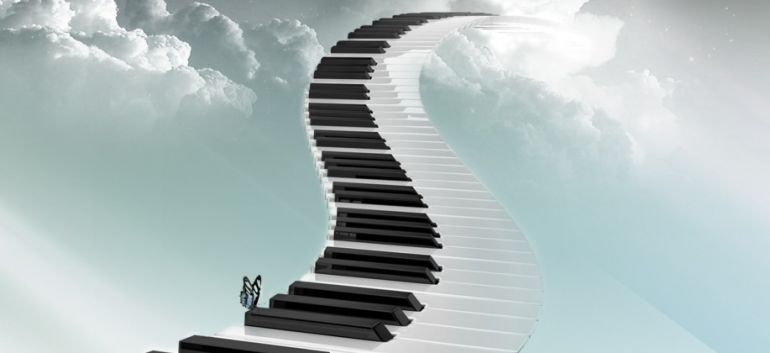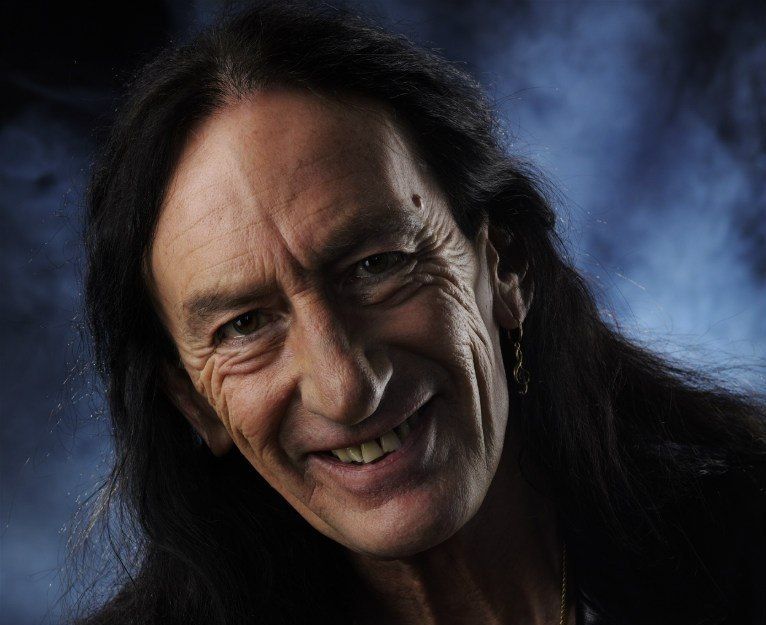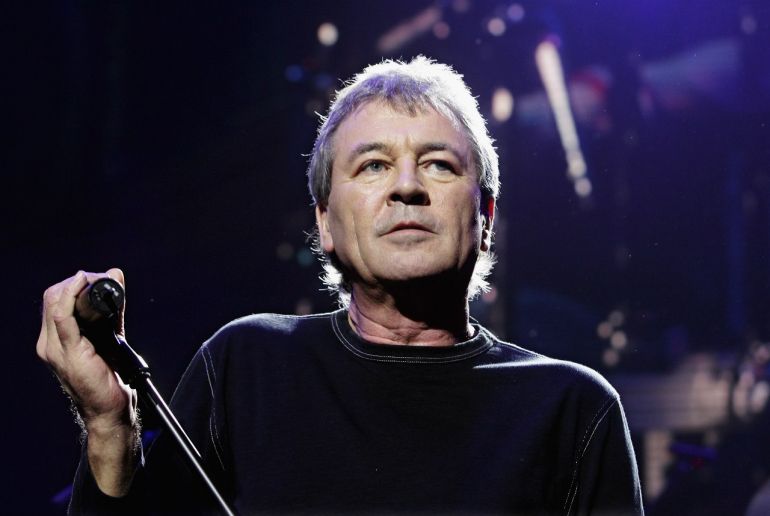Lviv monks of the Dominican Order and the successor of their cause, organist-restorer Vitaliy Pivnov

Olena Matselyukh
In memoriam to the teacher-mentor
The figure of Vitaly Pivnov falls out of the
general Soviet anti-religious contingent of organists who gave concerts in the
Soviet post-war Lviv. First of all, he was a religious and believing man. For
the author of these lines, Vitaly Pivnov became a true friend-mentor in
mastering the organ and learning the art of organ. A huge amount of time was
devoted by V. Pivnov in working with his students to expand their worldview and penetrate
into the essence of the sacredness of the organ as a musical instrument. He helped to get to the heart of the sacredness of the organ as a
musical instrument. He was a true intellectual who had inexhaustible
information in the field of organology, history, linguistics and culturology.
1. Biographical information.
Vitaliy Mykolayovych (Piven) Pivnov (1945 - 2019) - organist, organ master and restorer, cellist, teacher. His family roots are in Polissya, in the village of Zazyubarche, Radomyshl district, Zhytomyr region, where (according to V. M. Pivnov himself) “a good half of the village have the surname Piven”. Vitaliy Mykolayovych's uncle was also called Piven. There is a possibility of conjecture: serviceman Mykola Piven changed his last name to "Pivnov" due to the ambiguity of the interpretation of the onomastics of the Russian equivalent of "Pietukh (ROOSTER)" to the Ukrainian "piven" in the army and penitentiary circles of the Stalinist repressive regime.
Mykola Pivnov ended the war in Kalinkovichi, Belarus, where his son was born. Later, the serviceman was transferred to Lviv, and Vitaliy, who showed his ability to play music, entered Lviv Special Music School. Now it is Lviv Specialized Music Boarding School after S. Krushelnytska is one of four special music schools in Ukraine for especially gifted children.
Since school, the fate connected V. Pivnov to the Lviv musical environment. From 1952 to 1963 he studied at the S. Krushelnytska Specialized Music school in Lviv as a cellist under one of the leading cellists in the country - E. Spitzer. During the last years of his studies at the School, he showed great interest in the organ. He was especially interested in the construction of the instrument itself, its expressive possibilities, and the tendency to mending prompted the restoration of musical instruments, which at that time in Lviv and Halychyna were in large numbers in the destroyed temples. However, he entered Lviv Conservatory, continuing his studies with Spitzer - on the cello-teacher. And at the same time V. Pivnov is constantly looking for new and new places where there are broken organs. Gradually, the need to become an organ master matures.
During his conservative studies at the Lviv Opera, there was a vacancy for an organist on one of the last instruments of Jan Sliwinski, which was installed on the 3rd balcony immediately after the opening of the theater. At that time, the organ, like any other organ, needed constant care. V. Pivnov immediately took advantage of this. He became a theatrical organist: participation in performances gave the necessary performing practice. After graduating, from 1968 to 1976, he worked in the orchestra of the Lviv Opera and Ballet Theater as a cellist and organist.
The desire for professional growth as an organist prompted V. Pivnov to move to Kyiv and enter the conservatory there now as an organist to Professor A. Kotlyarevsky. In Kyiv, the situation changed, because he is now an organist, but at the same time works in the State Symphony Orchestra under the direction of S. Turchak, as a cellist. Russian musicologist and organist Arseniy Mykolayovych Kotlyarevsky (a student of Isaiah Braudo) is considered the founder of the Ukrainian Soviet Organ School. And this is natural, because it was his efforts in Soviet times in various cities of Ukraine, and even - in Central Asia (in Tashkent), that gave rise to the interest in organ art. At the same time, on Kotlyarevsky's initiative, knowledge about the church's spiritual organ and performance on this instrument started to spread.
Professor Arseniy Kotlyarevskyi immediately discovered the talent of a master and a fan of organ building in a student of V. Pivnov. This rare profession became simply necessary during the Renaissance of organ art in Ukraine. And the young enthusiast in organ restoration was actually out of competition. At the initiative of A. Kotlyarevsky after graduating from organ studies V. Pivnov from 1980 to 1984 worked in the Republican House of Organ and Chamber Music as an organ master. To do this, he underwent an internship in Český Krnov at the famous Rieger-Kloss organ factory.
However, Lviv with its sacred organ traditions acted like a magnet on Vitaliy Pivnov and after the death of S. Daich, V. Pivnov began his teaching career at the Lysenko Lviv Conservatory. But three years later, the organ elective subject at the conservatory was cancelled, and V. Pivnov focused entirely on concert activities and restoration work.
The abilities of the master in the person of Vitaly Pivnov are happily combined with a research approach, both to the instrument itself and to its history and musical heritage of the past. V. Pivnov constantly performed as a soloist-organist with very unconventional programs. He was interested not only in the monumental works of Marcel Dupre, Charles Tournemir, Charles-Marie Vidor and Louis Vierne, but also in the music of Czech composers (including Peter Eben, Leoš Janaček), America and Scandinavia, which is completely unknown among our organists. Organist V. Pivnov sometimes prepared original literary and musical compositions. He toured extensively in Ukraine, Russia, Belarus, Lithuania, Moldova, Latvia, Estonia, Kyrgyzstan, Tajikistan, as well as Poland and the Czech lands.
2.
Organ and Lviv are two kings who have been introducing the sacred to Ukraine together for over 600 years.
- Genealogically, the roots of the Lviv royal dynasty go back to two branches: the Kyivan princes Rurikovych and the Polish dynasty Piast. It was founded by Prince Roman Mstyslavovych - Grand Duke of Kyiv, Novhorod, Volodymyr and Halych and his wife, Princess Agnieszka, who was the daughter of Prince Boleslaw III of Poland. Their son Daniel (1202 - 1264) in December 1253 in the presence of nobles, clergy, with the support of his then living mother was anointed the King by the papal nuncio in Dorohychyn and received from Pope Innocent IV the title - King of Rus.
The city, which was founded by Daniel on the border between the Halychyna and Volyn principalities, in which he ruled and made the capital of the Kingdom of Rus, was named by him in honor of his son Leo – Lviv. After the death of his father, Leo inherited the Lviv crown and together with his wife Constance (daughter of the Hungarian King Bella IV) consolidated power, expanding the lands of the Kingdom.
Thus, the new state union in the lands of Western Ukraine became the main center for the cultivation of Christian, artistic and musical traditions, which originated in the depths of Ukrainian history. The Dominican Fathers were invited to Lviv by Queen Constance, who were to take care of the cultural, educational and artistic life of the city.
BeggarOrderoftheDominicans [lat. Ordo Fratrum Praedicatorum] – are brothers preachers, guardians of the foundations of the faith, fighters against heretics, inquisitors. The order was founded in 1215 in Toulouse by the Spanish monk Saint Dominic. Their largest educational institution is the Pontifical University of St. Thomas Aquinas in Rome. The motto of the Dominicans is "Glorify, Bless, Preach" (Latin Laudare, Benedicere, Praedicare). They paid great attention to the development of theology, philosophy, science and were the founders of many European universities. The Dominican Fathers took over the patronage of organ art.
During their reign, organ art was introduced in the Kingdom of Lviv. It was the monks of the Dominican Order who brought the organ to the city. They contributed to the introduction of organ accompaniment to the Holy Liturgy in Lviv churches at the end of the 13th century.
It is likely that the influence of the Dominicans was decisive even during the construction of the Latin Cathedral. In 1405, the first mention of organist Peter Engelbrecht appeared in the archives of the Cathedral. This fact is proof of the location of the organ in the temple, which suggests that it was at the beginning of the 15th century. the organ was first performed on in a Lviv shrine.
In 1407, the monks built their Gothic wooden church in the center of Lviv. This cathedral, despite numerous fires and destructions, constantly changing and developing like a phoenix, each time rose from the ashes.
In 1520, the first organ appeared in this temple of Corpus Christi, which the monks repeatedly rebuilt and improved. We have received a lot of information about the organs and organists of the Dominican Church. These are the names of masters who built for the cathedral in different years from the 16th to 18th centuries. instruments of different size and sound quality: Stanislav Lvovchyk, Sebastian from Krakow, Wojciech Albertus, Tomasz Turski, Sebastian Fessinger.
The influence of the Dominican Fathers on the development of organ art in Lviv was so great that they later built another Cathedral, but outside Lviv as a defensive structure. And what is significant: today in both of these temples organ music is constantly heard. In the Upper Cathedral of St. Mary Magdalene, as an accompaniment to the Catholic liturgy and as a concert interpretation of organ art.
In 1748, the Gothic building of the Lower Cathedral was dismantled due to its disrepair condition. The new church, which resembles not only the Vatican but also the Church of St. Charles in Vienna, was built in the late Baroque style in 1748-1764 and has the slogan Soli Deo Honor at Gloria (Only to God Honor and Praise).
In those days, there was a good tradition of preserving everything valuable that could be preserved from the previously destroyed building. Today, in the southern part of the church you can see an alabaster tombstone of the 16th century - the memory of an ancient Gothic church, which disappeared 275 years ago.
It was for this church that Lviv master Mykhailo Sadkovsky built a new organ in 1765 - 1766.
And at the beginning of the 17th century (1615), when the Upper Dominican Temple was already built, it is quite probable that an organ was also played there, because later a school of organists was opened there. Unfortunately, there is no documentary evidence. In 1765 - 1766, Lviv master Mykhailo Sadkovsky built a new organ specifically for the Church of Corpus Christi (Lower Church of the Dominicans).
Well-known researcher of Polish organs Jerzy Gołos in his fundamental work "The Polish Organ" traces in detail all the stages of construction of new organs in the 19th century. The first reorganization of Sadkovsky’s organ was carried out in 1808 by Yakub Kramkovsky from Lviv. It was a 26-register organ. Later, the author of the 23-register organ installed in 1862 in the Latin Cathedral Church (1839), the Lviv master Roman Ducheńsky made a new 25-register organ for the Church of Corpus Christi. In the following decades, it was repaired and improved by masters who were also owners of organ-building factories in Lviv - Ignacy Żebrovsky and Rudolf Haase.
Lviv Conservatory Professor Leszek Mazepa, describes the rescue of the last pre-war organ from the Dominican Cathedral in his memoirs. This wonderful 35-register instrument was built in 1910-1916 by Ignatius' grandson Kazymyr Żebrovsky. During the First and Second World Wars, the organ was not damaged, but with the arrival of Soviet troops, problems began with the care not only of the temple, but also of this 3-manual gem.
Then three very young enthusiasts of organ art, Yuriy Szybalsky (future author of the Lviv Organ Handbook), Yuriy Lutsiv (now a well-known conductor-teacher) and Leszek Mazepa (who was an authoritative researcher of Lviv's musical life), moved the whole organ to save it from imminent death. in parts to the premises of the conservatory. Now the portal of this organ decorates the stage of the Stanislav Ludkevych Concert Hall of the Lviv Regional Philharmonic.
3. The organ of the Dominicans as a matter of life of
the organist-restorer.
After a half-century break, the organwas again placed in the Dominican Cathedral. Then in the 1980s the Soviet
authorities turned the temple and monastery premises into a Museum of the
History of Religion and Atheism. The director of the museum managed to convince
the party leadership that the small organ in the museum exposition would be a
demonstration of a religious cult.
In 1984, on the initiative of Vitaly Pivnov, a small
portable organ was brought to the Museum, which has now been renamed the
History of Religion. The Transcarpathian Regional authorities took it from the
village temple near Uzhhorod and handed it over to the Museum. This portable
was made in the Halychyna city of Prešov, which now belongs to Slovakia, by master
Julius Gounod. His organ factory was active in the 1920s and 1930s. And in
Transcarpathia, several of his instruments have survived. The keyboard was
made in a separate design, which is quite unconventional for such small organs.
This portable was placed
in the altar of the Dominican Temple, but the performing and expressive
capabilities of the instrument did not satisfy the artistic needs of the organist-performer
V. Pivnov. At that time, in the abandoned Church of St. Lazarus (on St.
George's Hill) next to the Church of St. Mary Magdalene was a single-manual
organ built around 1860 by the Lviv organ firm of Roman Dukhensky, which had 7
registers and 1.5 octaves of pedals.
V. Pivnov transports it to the Museum of the History of Religion. During the restoration, the master found an opportunity to combine the Transcarpathian positive with the restored Northern organ of R.Dukhensky and launch them with a joint fan. They stood for some time in the altar of the Temple of Corpus Christi, and later were transferred to the side nave.
At that time, Vitaliy Pivnov traveled extensively in Halychyna and was well acquainted with the dilapidated churches and the remains of organs that remained there. But his special attention was drawn to the almost surviving organ in the Church of the Holy Trinity in Pomoriany, which was erected by King Jan III Sobieski in 1674. In order to save it, the organist-restorer transports him to the Lviv Museum of the History of Religion.
During the disassembly and transportation of the organ, nails of an unusual appearance flew out of the frame: forged, quadrangular, with two teeth-ears. Historians have pointed out that such nails were made before the beginning of the 18th century. Thus it was determined that the body of the organ was made at the end of the 17th century.
V. Pivnov substituted the pipes in two registers with the new ones as well as some of the tungues in the pipes, corrected the mechanics. As a result, the organ had one manual, 10 registers, 740 pipes. Among the registers was exotic and very pleasant – bamboo flute, whose pipes are made using natural bamboo. Through the efforts of the master organ-builder, this organ was soon heard in the Dominican Cathedral in the side nave.
Ten years after the profound renovation of the Church of the Holy Trinity in Pomoriany, the Museum of Religion was asked to return the instrument back. With the consent of the parties, the Museum handed over the Transcarpathian portable of organ building master Y.Huno. This little Organ from the temple of St. Lazarus is still in museum collections.
Nevertheless, V. Pivnov's interest in search and restoration activities led him to St. Martin's Cathedral. There he found an 11-register single-manual ancient organ with a pedal keyboard and 886 pipes.
There are a number of material and technical details that indicate the origin of this musical instrument. It was built in the early 18th century by German master Ludwig Vogel for the Lviv Church of St. Martin, which belonged to the monastery fraternity of the Order of Carmelites the shoed.. In 1782, the Austrian authorities moved the monks to the monastery of the Carmelites the barefooted at the church of St. Michael the Archangel, a school was opened in the monastic cells, and the church became a parish. The organ fell into disrepair over the years. V. Pivnov placed it in the side nave of the Dominican Cathedral. And for some time concerts from the Museum of the History of Religion took place in the Dominican Temple. The master left the control panel in the same position as in St. Martin's Cathedral and the organist sat facing the prospect.
At the end of the 20th century, the church building of the Church of the Corpus Christi was transferred to the jurisdiction of the Greek Catholic community of Lviv and named as the Church of the Holy Eucharist of the UGCC. The intensive use of the church building by the newly built church became incompatible with holding public concerts here. Therefore, the Museum of the History of Religion decided to turn the monastery refectory into a concert and exhibition hall. It was here, in 2011, that the organ of L. Vogel was transferred by V. Pivnov. At the same time, the master restored the original facade of the old organ, carried out a significant reconstruction of improvements in the mechanics and the system of register switches, and installed the keyboard on the side. This new position of the organist contributed to better contact between the performer and the audience.
Today this instrument is considered to be the oldest of the current organs of Ukraine. It is entrusted exclusively with secular functions. He invariably gathers crowds of tourists at concerts several times a week, or even a day.
Organ master, restorer and organist Vitaly Pivnov thus connected the last 35 years of his life with the Cathedral of Corpus Christi of the Dominican Fathers and put all his restless energy to organ music, which first sounded in 1520 in this sacred monastery of monks. -Dominicans, sounded daily up till nowadays. On this cherished creation of his life Vitaly Pivnov enchanted the audience with organ masterpieces for the last time a week before his death.
Vitaly Pivnov is a creative person who combines musical and technical abilities. He was an organ master with a great soul and treated the restored instruments as his wards. This applies to the Castle in Zbarazh, the church in Mukarev Pidlisny, the church in Pomoriany, the church of St. Lazarus in Lviv, as well as the organ housed in the Uzhhorod Museum. Organ master Pivnov carried out repair work in Uzhhorod, Seredny (Transcarpathia), in the town of Bar in the Vinnytsia region, Polonne and Dunaivtsi in the Khmelnytsky region, as well as in the Kamyanets-Podilsky Church of the Holy Apostles Peter and Paul.
However, the cause of his life, the temple in which he lived and did not cease to enjoy, was the Lower Cathedral of the Dominican Fathers. It is one of the most striking architectural monuments of the Baroque era, which is a kind of reduced copy of St. Peter's Basilica in the Vatican.























